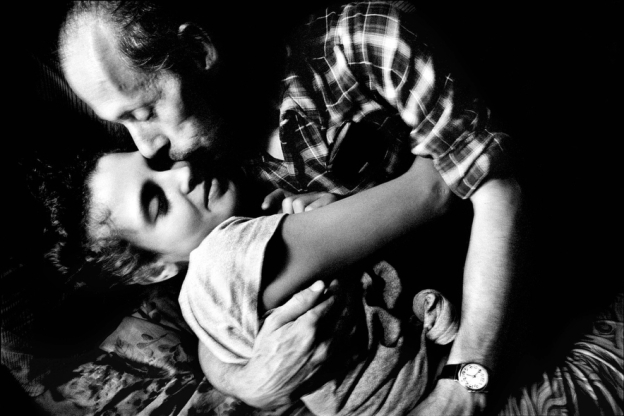hen Marc Asnin was 18 years old, he decided to document his uncle’s life. As he spent more time with his mother’s brother, he learned secrets of his family’s past, many of which his mother denied were true. Uncle Charlie is crazy, Esther would say, but she wouldn’t discuss it any further.
She finally broke down and admitted that Charlie was telling the truth about dark aspects of their childhood growing up in Brooklyn, New York. Esther had escaped that life; her brother was not so lucky.
In his upcoming book, “Uncle Charlie,” Asnin shares 31 years of photographic documentation and the 71 years of his uncle’s life, through his uncle’s words.
“From my earliest memories, my uncle was my favorite,” Asnin told CNN. By the time he started college, the photographer realized Charlie “had bottomed out in love.” In 1981, through his aunt, he asked if he could start this project. Charlie agreed.
For the next three decades, with the longest stretch of absence being six months, Asnin consistently photographed his uncle. He had all access, he said.
Asnin assumed his uncle figured, “Who else was going to pay attention?”
The book reveals Charlie’s Valium addiction, his broken relationship with his five children, his multiple marriages, his hate crime against his own race. But it also asks the age-old question of nature versus nurture.
“We’re all shaped by the family we come from,” Asnin said. And, he said, every family has a “Charlie” on some level.
“We don’t want to share that, but we do want to share it,” he added.
The project has taught him to embrace the past. Even with family problems, Asnin says, his parents “told me to never look away.”
In the beginning of the project, Asnin had moments of frustration watching Charlie’s life. He has had mixed feelings about him but usually feels pretty neutral.
“I hated him some moments and loved him some moments,” he said. However, he remained unbiased and shows all sides of Charlie’s story in the book. Though he edited the images and text, “I didn’t live his life,” Asnin said. “At the end of the day I went home.”
Charlie’s is the only voice heard in the text, which is an important aspect of the story, since it is his life. It gives readers the opportunity to decide if he’s someone they can feel sympathetic toward, Asnin said.
Charlie’s story has come full circle, his life parallels his own father’s, even with Charlie ending up sitting in the same place: “alone by the window.”
